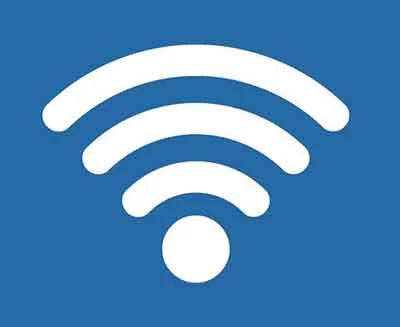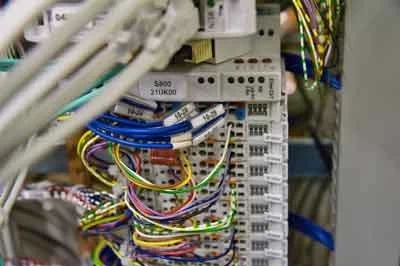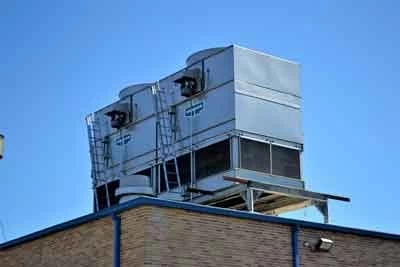Wireless Sensor Networks and the Impact on HVAC Monitoring

Traditional building automation systems have often relied on a relatively sparse network of wired sensors to monitor temperature, humidity, and perhaps a few other basic parameters. Wireless sensor networks are disrupting this model, enabling the deployment of far denser arrays of sensors, providing a detailed, real-time picture of the indoor environment, and fundamentally changing how HVAC systems can respond.
How Wireless Sensor Networks Transform Data Collection
Density: The low cost and small form factor of wireless sensors allow them to be deployed in large numbers throughout the building. This eliminates the "blind spots" between sparsely placed wired sensors.
Variety of Sensor Types: Wireless networks can accommodate sensors measuring temperature, humidity, CO2, occupancy, light levels, airflow, and various pollutants, depending on the application.
Flexibility and Ease of Deployment: No need to run wires, making installation simpler, quicker, and less disruptive. Sensors can be easily repositioned as needed or added to monitor a new area.
Real-time Data: Wireless sensors continuously transmit data, providing up-to-the-minute updates on the indoor environment, as opposed to relying on scheduled intervals common in some wired systems.
Applications and Benefits for HVAC Control
Zonal Comfort Control: A dense grid of temperature and occupancy sensors allows the HVAC system to go beyond single-zone control. Areas can be subdivided for tighter temperature management based on real-time occupancy and thermal variations within the space.
Demand-Controlled Ventilation: Dense CO2 sensor networks enable fine-tuned ventilation control based on actual occupancy density in different parts of the building, leading to significant air quality improvements and energy savings.
Airflow Balancing: Wireless pressure and airflow sensors across a duct network can assist in pinpointing airflow imbalances in real-time, guiding system adjustments to optimize distribution within the building.
Problem Detection: Detailed sensor data can reveal issues like failing dampers or deteriorating insulation, often before they become noticeable to occupants or cause major equipment faults.
Data-Driven System Commissioning: Wireless sensor networks make the system commissioning process more comprehensive, verifying performance across a variety of operating conditions and revealing any installation shortcomings.
Technical Considerations and Implementation Challenges
Network Robustness: Ensure the chosen wireless protocol (e.g., Zigbee, Z-Wave, Bluetooth mesh) is reliable in the specific building environment, providing adequate range and resilience to interference.
Power Management: Battery-powered wireless sensors offer the most flexibility but require a battery management strategy to ensure reliable network operation. Some applications might utilize energy-harvesting sensors powered by light or vibration.
Data Management and Integration: The volume of data generated by dense sensor networks demands a BAS platform capable of efficiently handling and processing real-time data streams to extract actionable insights.
Sensor Placement and Calibration: Careful consideration of sensor locations is necessary to ensure data accuracy and relevance for the intended HVAC control strategies. Periodic calibration might be needed depending on the sensor type.
Security: Wireless transmissions must be secured with encryption and access control mechanisms to prevent unauthorized access or manipulation of sensor data.
Beyond Simple Sensor Readings
The true potential of wireless sensor networks in HVAC control goes beyond the gathering of granular data. When coupled with AI-powered analytics, these networks enable:
Spatial Modeling: Algorithms can create detailed thermal maps of the indoor environment in real-time, pinpointing comfort problem areas or drafts often unnoticeable with traditional control.
Predictive Control: Sensor-driven analytics can forecast changes in occupancy or thermal load, enabling the HVAC system to adjust preemptively for maximum comfort and efficiency.
User Engagement: Wireless sensors embedded in personalized comfort devices or integrated into building management apps could give occupants localized control over their environment and provide feedback on the actions taken by the HVAC system.
Wireless sensor networks empower building automation systems to shift from reactive to proactive HVAC management. By shedding light on previously unseen aspects of the indoor environment, they enable targeted and highly optimized HVAC operation. This paradigm shift translates into improved occupant comfort, air quality, energy savings, and the ability to identify equipment problems in their early stages, marking a significant efficiency and operational leap forward for smart buildings.







